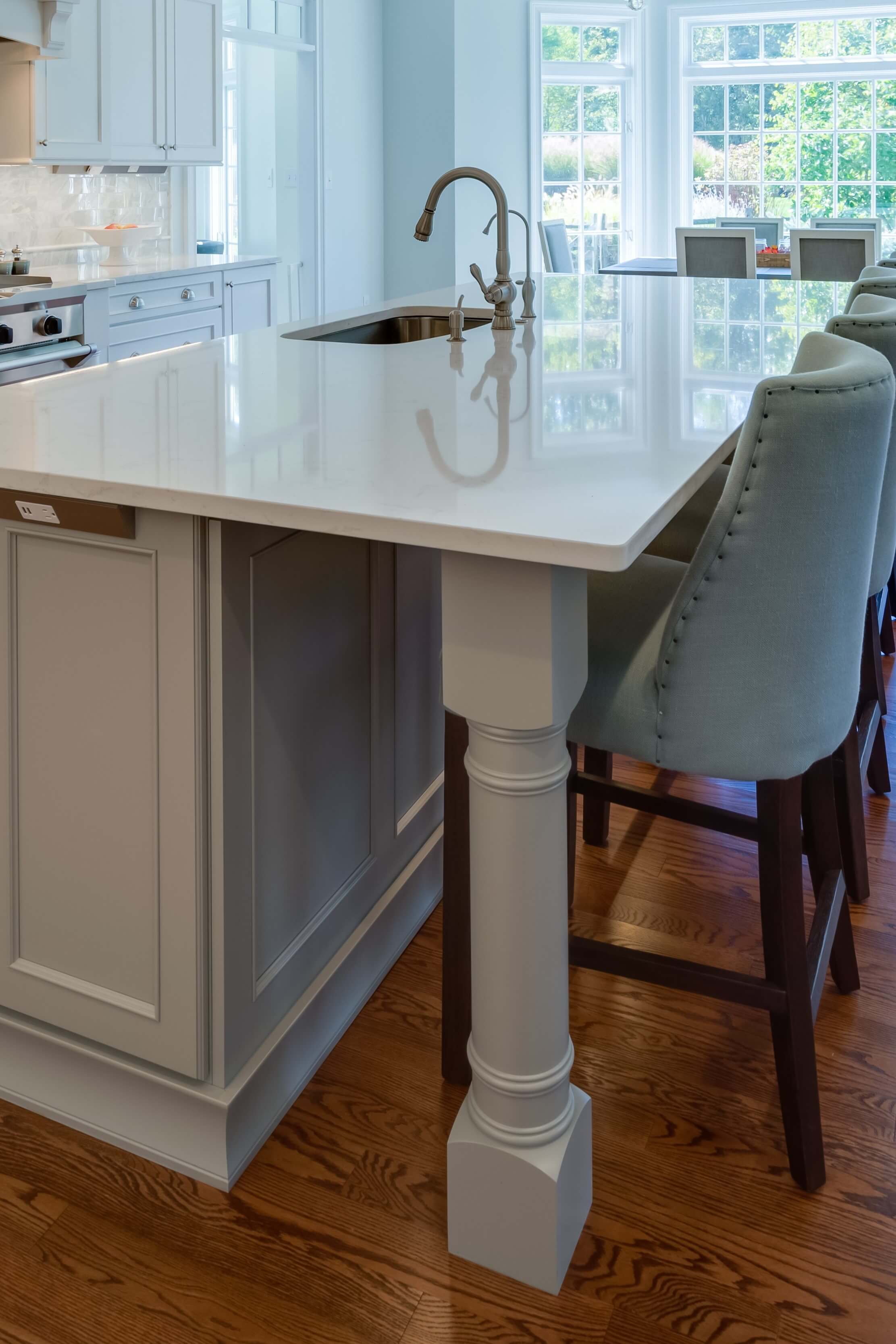Create a Magnificent Focal Point with Sophisticated Legs For Kitchen Island
Wiki Article
Crucial Variables to Take Into Consideration When Picking Legs For Cooking Area Island
Choosing the proper legs for a kitchen area island involves a careful analysis of numerous aspects that can substantially influence both functionality and visual charm. Among these, the choice of product plays an essential function in ensuring durability, while the layout needs to match the existing decor. Factors to consider such as height and weight assistance are vital for stability and convenience. As we explore these components, it ends up being clear that each decision can have far-ranging implications for the total kitchen area experience. What subtleties should be thought about in each of these categories to attain the perfect equilibrium?Material Options
When choosing legs for a kitchen island, comprehending the numerous product choices is crucial for achieving both visual allure and structural stability (Legs For Kitchen Island). The selection of product considerably affects not only the durability of the island but likewise its total style and performanceMetal legs, frequently made from stainless steel or wrought iron, contribute a industrial and modern feel while ensuring resilience and stability. These materials are immune to put on and can sustain significant weight, making them excellent for bigger islands.
One more choice is engineered products, like MDF or plywood, which can be a lot more economical while still supplying a variety of finishes. They might not supply the exact same level of stability as strong timber or metal. Legs For Kitchen Island. Finally, materials such as acrylic or glass can create a modern appearance, though they may require additional assistance to make sure security.
Ultimately, the option of material for cooking area island legs must line up with the desired capability and the general theme of the cooking area.
Style and Design

When thinking about design, the form and surface of the legs are essential. Tapered legs can provide a sense of lightness and beauty, while thicker, much more robust legs can communicate stamina and stability. Furthermore, the finish-- be it painted, stained, or natural-- should complement the cabinetry and countertop products to develop a unified appearance.
Additionally, the style of the legs can likewise show personal preference. Personalized or attractive legs, such as those including complex makings or distinct geometric shapes, can act as focal points, including personality and character to the kitchen area. Ultimately, the right selection will certainly not only enhance capability yet likewise elevate the visual allure, making the kitchen area island a standout feature of the home.
Elevation Factors To Consider
Selecting the appropriate height for cooking area island legs is vital, as it directly affects both capability and comfort. The common height for a kitchen area island generally varies from 36 to 42 inches, aligning with typical countertop elevations.
It is also vital to account for customers' elevations and preferences. Customizing the elevation can make sure a comfortable experience for all member of the family, making the kitchen island an extra useful and pleasurable space.
Weight Assistance
Guaranteeing adequate weight assistance for kitchen island legs is essential for both security and functionality. The kitchen area island frequently offers multiple objectives, including food prep work, dining, and added storage, demanding a robust assistance structure. When choosing legs, it is crucial to think about the overall weight capability called for based on the island's planned use and the materials that will certainly be placed on it.The option of product for the legs plays a considerable duty in their weight-bearing capabilities. Solid timber, metal, and durable compounds generally give superior stamina contrasted to lighter materials. Furthermore, the layout of the legs-- whether they are straight, tapered, or have a pedestal form-- can affect their capacity to distribute weight efficiently throughout the structure.
Furthermore, the leg positioning need to be strategically prepared to improve security. Legs placed at the corners or with a larger base can better sustain larger lots. Always speak with the maker's requirements regarding load limits to guarantee that the legs can sustain the designated weight without compromising safety and security. In recap, picking kitchen area island legs with sufficient weight support is essential for producing a risk-free and practical culinary area.
Installment and Upkeep
Appropriate installation and upkeep of kitchen island legs are important for guaranteeing longevity and stability. This commonly includes safeguarding the legs to the island base making use of proper bolts, making certain that the legs are degree and aligned.As soon as set up, normal maintenance is necessary to protect the stability and appearance of the legs - Legs For Kitchen Island. For wooden legs, routine cleaning with a wet fabric and application of suitable timber gloss can avoid dampness more information damage and preserve their coating. Metal legs might need a mild cleaning service to get rid of grease and gunk, adhered to by a dry fabric to protect against rust development
Furthermore, evaluate the legs frequently for indications of wear or damages, such as splits or loosened joints. Tightening up screws or bolts as needed can also prolong the life expectancy of the legs. By adhering to these setup and upkeep methods, home owners can make certain that their kitchen island remains sturdy and visually appealing for years to come.
Conclusion

Aesthetic coherence is vital in picking the style and design of legs for a kitchen area island, as these components greatly you can try here influence the general atmosphere of the room. Conical legs can provide a sense of lightness and beauty, while thicker, visit here a lot more durable legs can share toughness and security.Choosing the appropriate height for kitchen area island legs is vital, as it straight influences both capability and convenience. In recap, picking cooking area island legs with adequate weight support is important for creating a practical and safe culinary space.
In conclusion, selecting legs for a kitchen island necessitates careful factor to consider of numerous variables, consisting of product options, style, height, weight support, and installation.
Report this wiki page